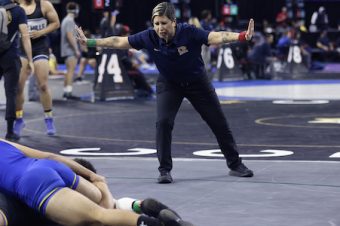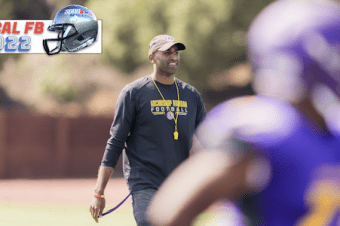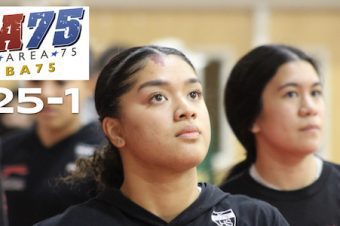TriSTEPS: Acclimating and adjusting to open water swimming
CalHiSports Insights April 18, 2012 SportStars 0
Spring is here, and it’s time for open water swimming!
If you are new to triathlon, swimming in open water can be a daunting idea. However, open water swimming should be, and is, a fun aspect of triathlon training. First, know that swimming in open water is very much like swimming in a pool: you use the same strokes, you breath the same, you swim the same.
However, there are a few tips and strategies that will help you swim more effectively and efficiently in open water. But for the most part, swimming is swimming, whether in a pool or other body of water.
Basic Skills for first-time open water swimmers
1. COLD WATER ACCLIMATION.
In the pool, the first 5-10 minutes is spent with a “warm up” meaning actually swimming laps. In open water, you must ease in. You should always plan for at least 5-10 minutes before you even swim to acclimate to the cold water.
Cold water can be shocking, especially on your face. Each time you enter a body of water, take the time to just be in the water. Feel the water on your body, put your face in, and relax. Figure out the best methods for you to become comfortable and acclimate to cold water, and practice them at each open water swim. You will find that acclimating for at least 10 minutes before a race will make you more comfortable, and will make the race experience more pleasant.
Acclimation steps: Dunk you head. Get your face wet. Scoop water into the front of your wetsuit. Pull on the arm openings of the wetsuit to allow water in through the arms. Pull the arms up so you have room in your chest area. Pull on the leg openings on your lower legs to allow water in through the legs. Pull up the legs to have more room in your groan area, and so that the wetsuit is pulled up, and fits snugly against your body — no sagging.
After each step, take a moment to feel comfortable with that one change before moving slowly into the next phase. You will find that the water in the wetsuit actually warms within seconds, creating better insulation between the wetsuit and your skin. All the adjusting will allow better range of motion while swimming.
2. RESETTING.
The first way to get over a fear is to face it, but most importantly, to know what to do after. If you are new to swimming in open water, and even if you’ve been doing it for years, there is what I like to call, the “freak out factor.” You are in, well, open water. It’s okay to be a little freaked out. Just like the first time you got on your bike, or used clip pedals. It’s what you do after the freak-out to reset that matters.
Many factors can distract or throw you off your game when swimming in open water. Something may touch you, you may run into a lane line, or you may have trouble seeing under the water. After you’ve had “a moment” learn the best way to “reset”. Find a way to reset your mind, and your body position. The best body position to reset is streamline position, face down with arms above your head, and kicking. This will reset your actual swimming position, and prepare you for the next phase of the swim. If you are newer to open water, you can also try a back float.
Mostly, relax, have fun, and swim like you do in the pool.
3. OPEN WATER SAFETY/COMFORT.
You will need a wetsuit.
Even if you are planning to compete in a warm-water, non-wetsuit race (races with water temperature 77 degrees or higher) you will need a wetsuit for practice in your local swimming venues. A wetsuit will keep you warm and comfortable in cooler water, aide in floatation. It will help by making you more buoyant, and staying in correct posture more easily, but you still must maintain your head position in line with your spine, just like in the pool.
A brightly-colored swim cap should always be worn when swimming in any open body of water. Heat escapes from your head and your feet. A swim cap, even just a latex cap, will keep heat from escaping so rapidly. Wearing a brightly colored cap will help others see you. If you are wearing a wetsuit material neoprene cap, wear a second, brightly colored swim cap on top so you are more easily visible.
Always swim with a buddy, and in a supervised area. For swimming in water 55 degrees or below, a “squid lid” — a swim cap made of wetsuit material and booties of wetsuit material are recommended.
Liz Elliott is the Head Coach of the Tri-Valley Triathlon Club based in Dublin, CA. She specializes in preparing beginner triathletes for their first race(s). TVTC is an all inclusive endurance club for adults and features a summer high school team to debut in June2. Contact her at Liz@TriValleyTriClub.com. Find previous TriSteps columns at SportStarsOnline.com
SportStars
SportStars Magazine: High School Sports Articles Online SportStars is your go-to source for the very best high school sports articles in California. Player and team profiles, game coverage, health and fitness tips and the largest Camps, Clinics & Combine resource for athletes. We're the story behind the stats.










No comments so far.
Be first to leave comment below.